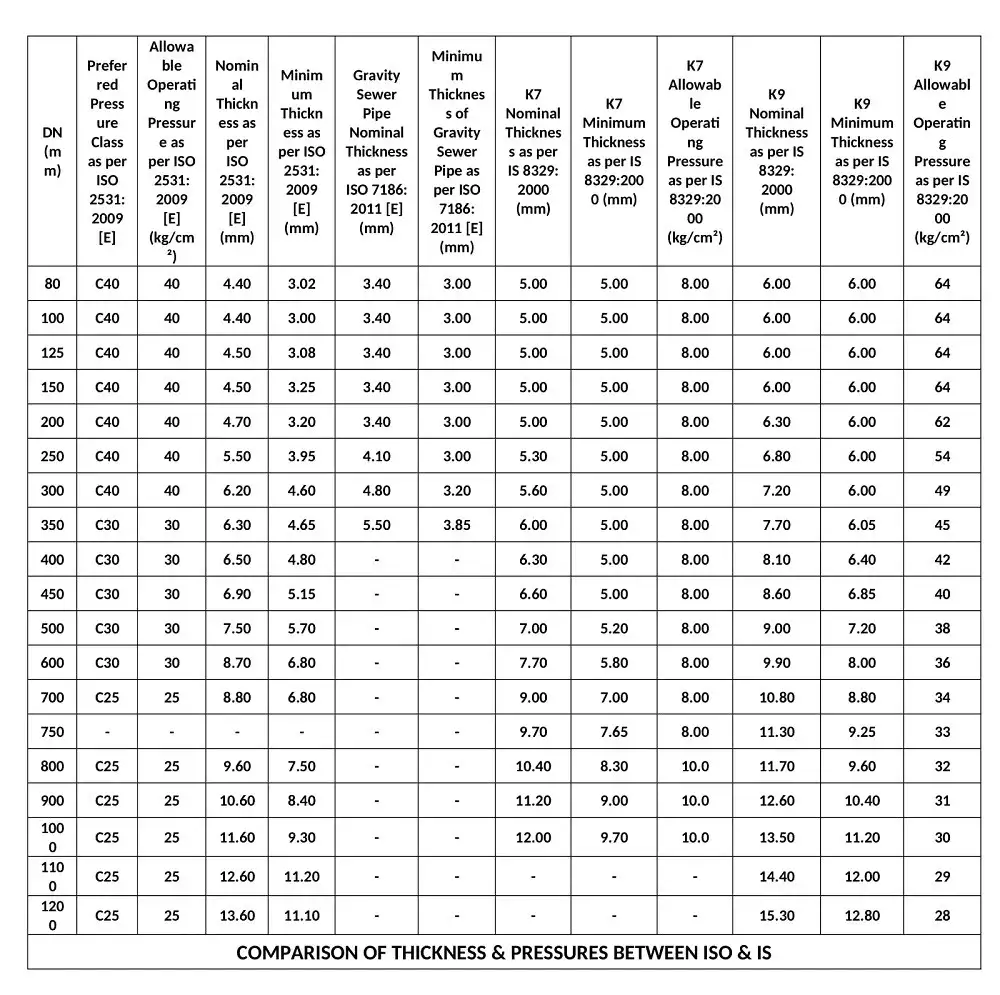Ductile iron standards define the chemical composition, mechanical properties, and testing methods for spheroidal graphite (nodular) iron castings worldwide. The most widely referenced specifications include ASTM A536 in the United States, ISO 1083 internationally, EN 1563 in Europe, JIS G5502 in Japan, and GB/T 1348 (or GB 1348) in China. While each standard uses different grade designations—such as 65-45-12 (ASTM), 400-12 (ISO), EN-GJS-400-18 (EN), FCD450 (JIS), and QT450-10 (GB)—they all ensure consistent tensile strength, elongation, hardness, and microstructure requirements to guarantee reliable performance across global supply chains.

Major International Standards
ASTM A536 (U.S.)
ASTM A536 covers five ductile iron grades, defined by minimum tensile strength, yield strength, and elongation requirements on separately cast specimens. Grades include 60-40-18, 65-45-12, 80-55-06, 100-70-03, and 120-90-02. Heat treatments vary by grade: full ferritizing anneal for 60-40-18; quench and temper or normalize and temper for 100-70-03 and 120-90-02; and as-cast for 65-45-12 and 80-55-06.
ISO 1083 (International)
ISO 1083:2018 classifies spheroidal graphite cast irons into groups based solely on mechanical properties (tensile strength and elongation), with grades such as 400-12, 350-22, 500-7, and 600-3. This standard aligns closely with ASTM A536 but uses a two-number format: the first indicates minimum tensile strength (×10 MPa) and the second minimum elongation (%) .
EN 1563 (Europe)
EN 1563 specifies spheroidal graphite cast iron grades with the “EN-GJS-XXX-YY” nomenclature, where XXX is the minimum tensile strength in MPa and YY the minimum elongation percentage. For example, EN-GJS-400-18 requires ≥400 MPa tensile strength and ≥18% elongation. It also provides proof stress and hardness limits across wall-thickness ranges.
JIS G5502 (Japan)
JIS G5502 (latest revision 2001) defines FCD grades for ductile cast iron, such as FCD450 and FCD500. FCD450 corresponds to ~450 MPa tensile strength and 10% elongation, roughly equivalent to ASTM 65-45-12 and EN-GJS-450-10. The standard includes both mechanical property requirements and recommended applications.
GB/T 1348 (China)
GB/T 1348-1998 was developed based on ISO 1083 and ASTM A536, defining grades like QT450-10 (≥450 MPa tensile, ≥10% elongation). It prescribes microstructure (spheroidal graphite count and matrix ferrite content), tensile and yield strength, elongation, and Brinell hardness.
Standards Comparison Table
| Standard | Grade Designation | Tensile Strength (MPa) ≥ | Elongation (%) ≥ | Hardness / Proof Stress |
|---|---|---|---|---|
| ASTM A536 | 65-45-12 | 450 | 12 | — |
| ISO 1083 | 400-12 | 400 | 12 | — |
| EN 1563 | EN-GJS-400-18 | 400 | 18 | Rp0.2 ≥ 220 MPa (varies) |
| JIS G5502 | FCD450 | 450 | 10 | — |
| GB/T 1348 | QT450-10 | 450 | 10 | HBS ≤ 255 |
Frequently Asked Questions
Q1: Why are there multiple ductile iron standards?
Different regions developed their own specifications to address local manufacturing practices, testing methods, and nomenclature conventions. However, major standards often cross-reference or align in grade equivalence to facilitate international trade.
Q2: How do I choose the right standard for my project?
Select the standard most recognized by your foundry and end-user. For global projects, referencing both ASTM and ISO grades provides clarity; for European markets, EN 1563 designations are preferred, while Chinese suppliers often quote GB/T 1348 grades.
Q3: Do standards include chemical composition limits?
ASTM A536 specifies only mechanical requirements; chemical composition is agreed upon contract or foundry practice. ISO 1083, EN 1563, JIS G5502, and GB/T 1348 include both mechanical and chemical composition tables in their full texts.
Q4: How are standards updated?
International standards like ISO 1083 undergo periodic review (every 5–10 years) to incorporate new research and industry feedback. Regional bodies update standards as needed; for example, JIS G5502’s last major revision was in 2001, while ISO 1083 was revised in 2018.
Q5: Are there always direct equivalents between standards?
Most common grades (e.g., ASTM 65-45-12, ISO 400-12, EN-GJS-400-12) are functionally equivalent, but slight differences in proof stress, hardness, or heat-treatment requirements can exist. Always verify the detailed property tables before specifying cross-standard substitutions.
References:
- ASTM A536 – Standard Specification for Ductile Iron Castings
- ISO 1083:2018 – Spheroidal Graphite Cast Irons
- EN 1563 – Spheroidal Graphite Cast Irons (European Standard)
- JIS G5502 – Ductile Cast Iron (Japan Industrial Standards Committee)
- GB/T 1348 – Spheroidal Graphite Cast Iron (Chinese National Standard)
